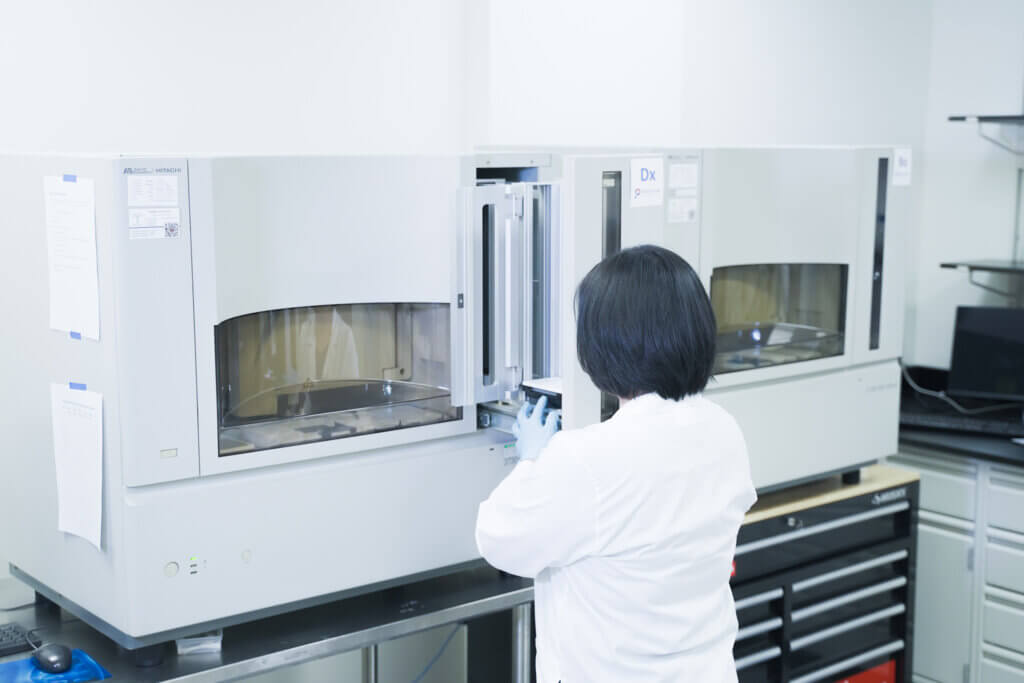Sanger DNA Sequencing
Automated DNA Sequencing by Capillary Electrophoresis Using a 3730xl DNA Analyzer
The process of DNA synthesis and replication in a cell involves DNA helicase, DNA polymerase, DNA template, and deoxynucleotides. DNA replication starts when DNA helicase unravels the double-helix structure to expose single-stranded DNA and form a replication fork. RNA primase introduces a primer that binds to the single-stranded DNA. DNA polymerase then binds to the replication fork and starts DNA synthesis by sequentially adding nucleotides to the 3´-hydroxyl end of the RNA primer bound to the DNA template (Figure 1). The result is the creation of an “extension product.” The extension product grows in the 5´ to 3´ direction by forming a phosphodiester bridge between the 3´-hydroxyl group at the growing end of the primer and the 5´-phosphate group of the incoming deoxynucleotide. The DNA sequence is copied with high fidelity because at each base on the DNA template, DNA polymerase incorporates the nucleotide that is complementary to that base.
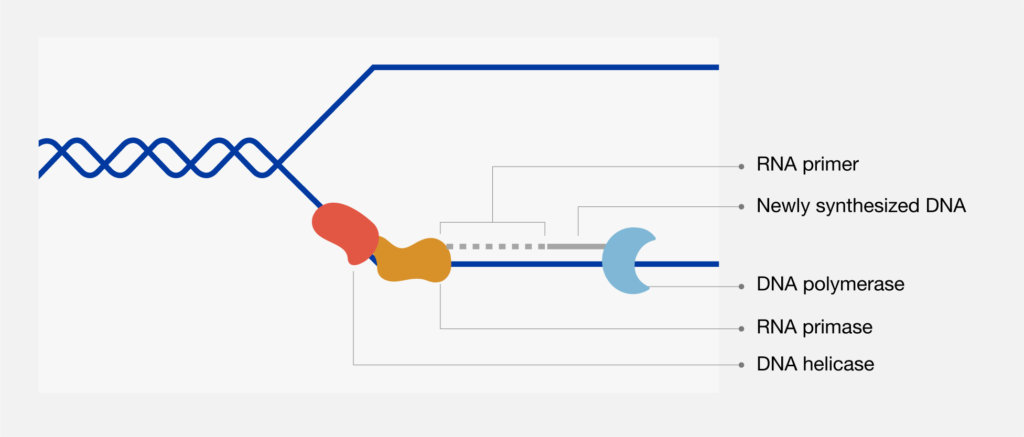
Figure 1: DNA replication fork
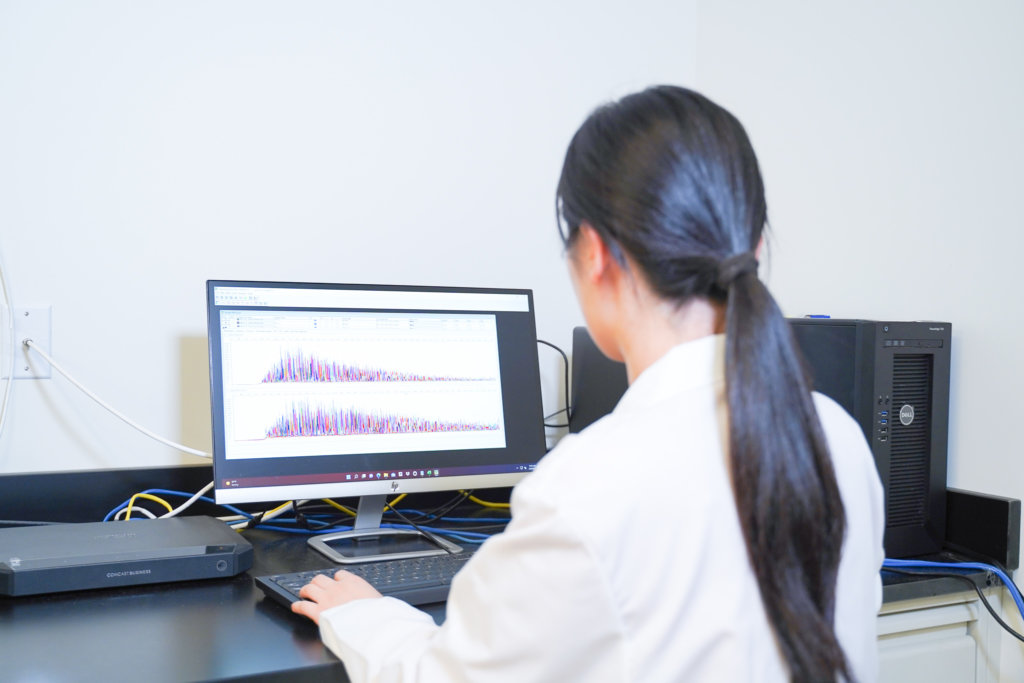
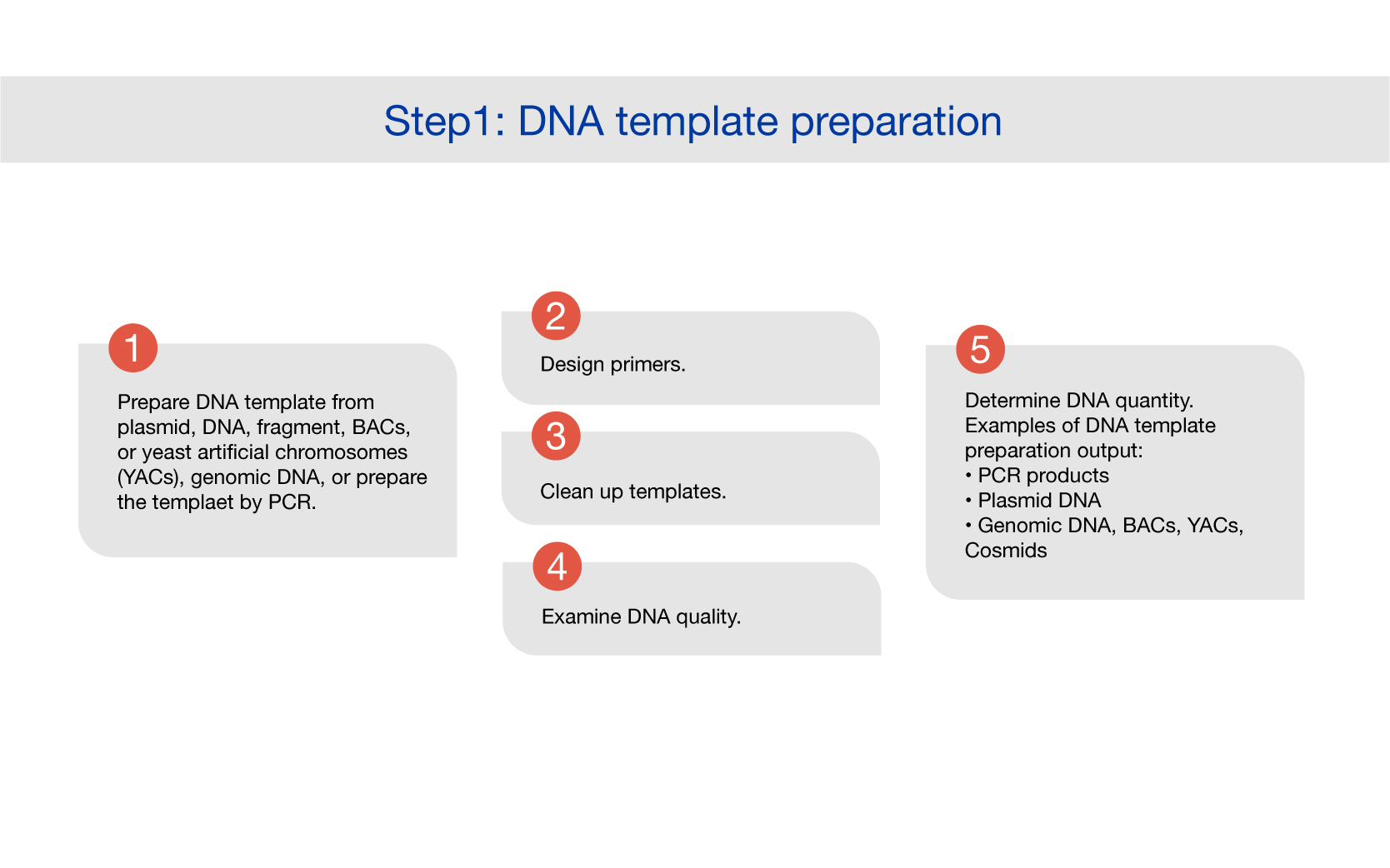
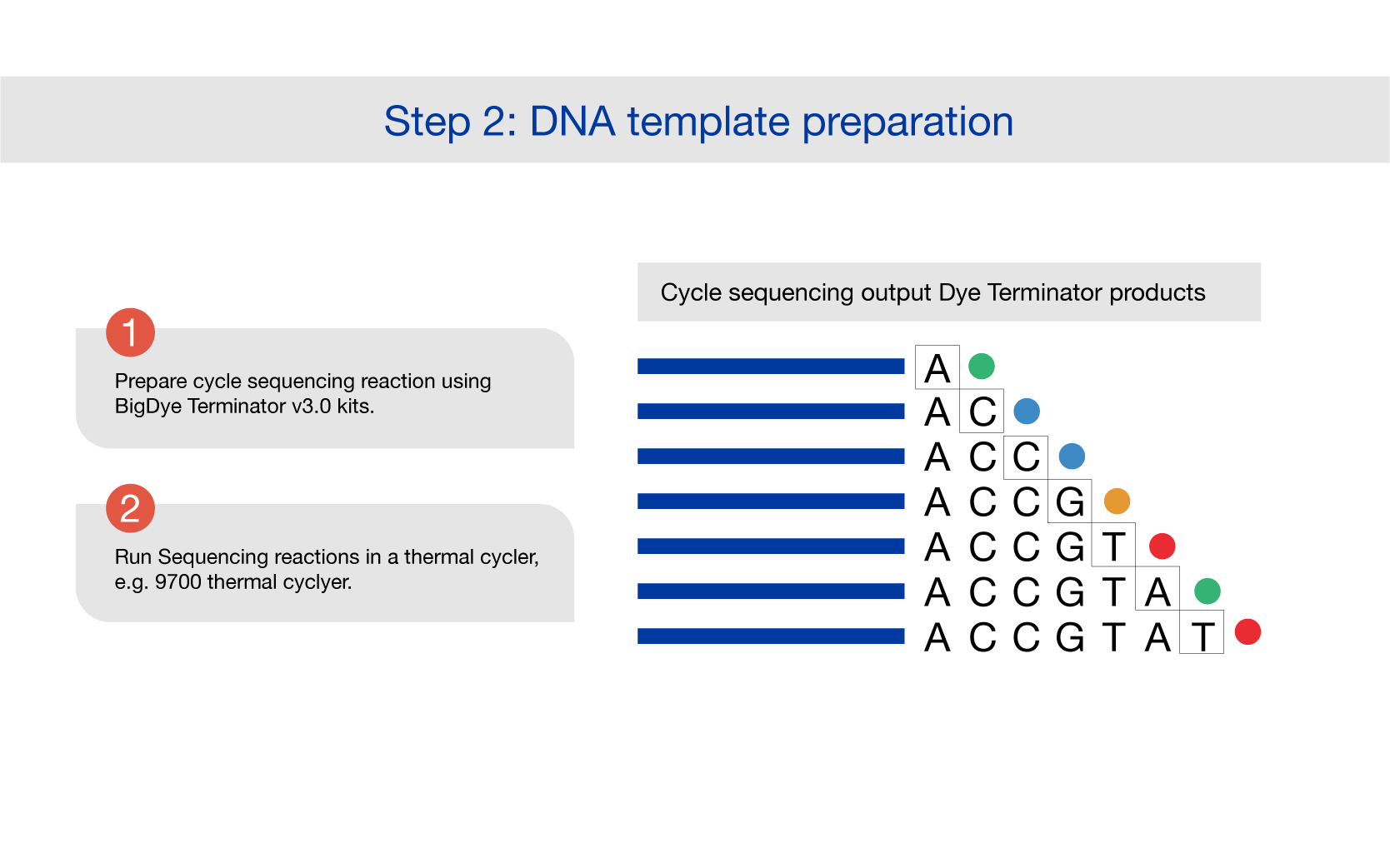
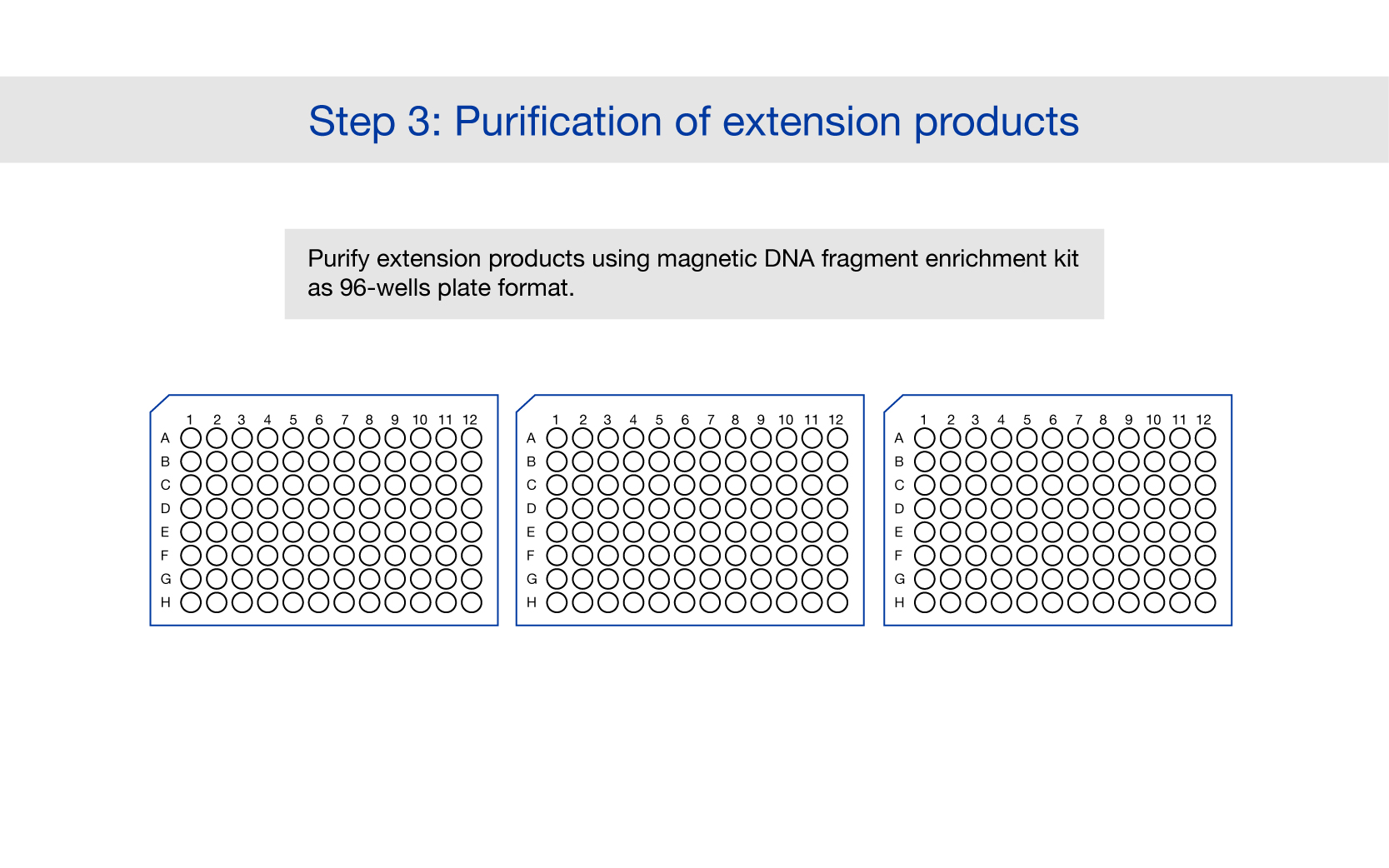
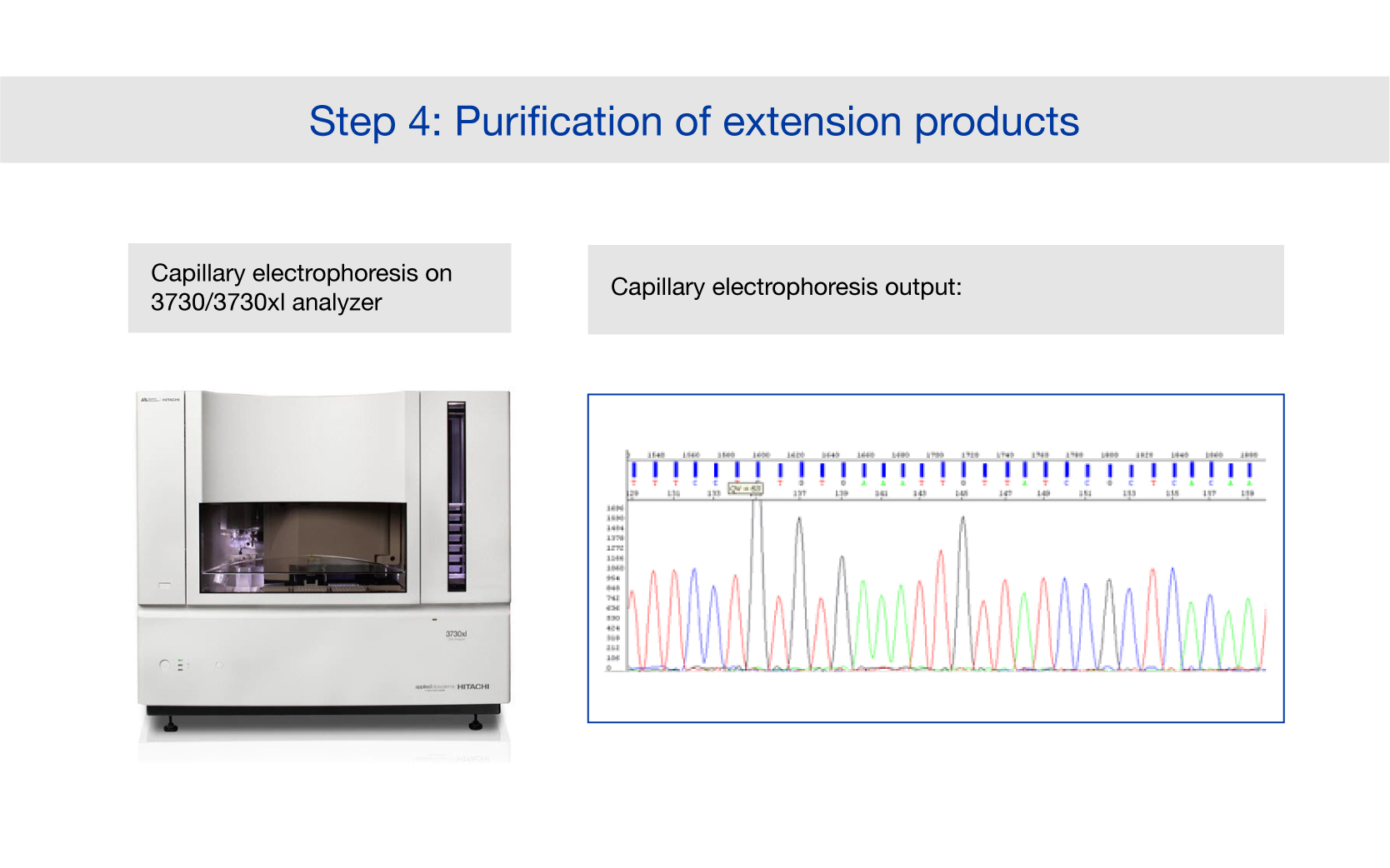
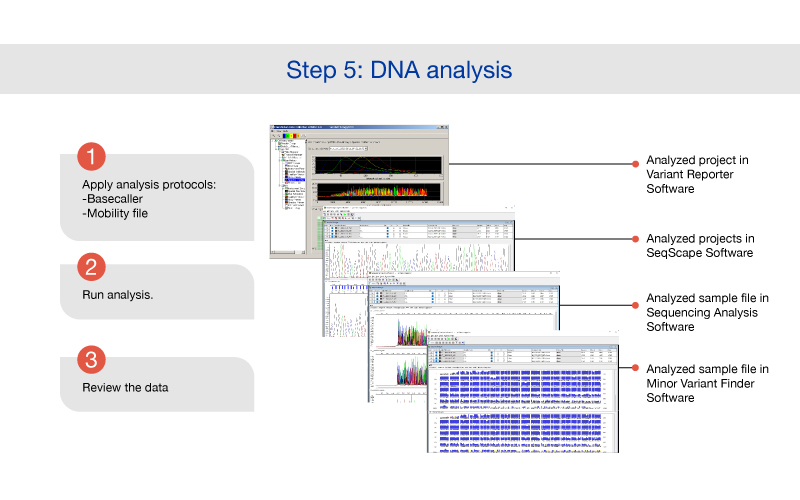
Automated DNA sequencing workflow
The principles of DNA replication were used by Sanger et al. in the development of the process now known as Sanger dideoxy sequencing. This process takes advantage of the ability of DNA polymerase to incorporate 2´,3´-dideoxynucleotides—nucleotide base analogs that lack the 3´-hydroxyl group essential in phosphodiester bond formation. Sanger dideoxy sequencing requires a DNA template, a sequencing primer, DNA polymerase, deoxynucleotides (dNTPs), dideoxynucleotides (ddNTPs), and reaction buffer.
Four separate reactions are set up, each containing radioactively labeled nucleotides and either ddA, ddC, ddG, or ddT. The annealing, labeling, and termination steps are performed on separate heat blocks. DNA synthesis is performed at 37°C, the temperature at which DNA polymerase has the optimal enzyme activity. DNA polymerase adds a deoxynucleotide or the corresponding 2´,3´-dideoxynucleotide at each step of chain extension. Whether a deoxynucleotide or a dideoxynucleotide is added depends on the relative concentration of both molecules. When a deoxynucleotide (A, C, G, or T) is added to the 3´ end, chain extension can continue. However, when a dideoxynucleotide (ddA, ddC, ddG, or ddT) is added to the 3´ end, chain extension terminates. Sanger dideoxy sequencing results in the formation of extension products of various lengths terminated with dideoxynucleotides at the 3´ end. The extension products are then separated by electrophoresis.
Applied Biosystems fluorescence-based cycle sequencing system is an extension and refinement of Sanger dideoxy sequencing. Applied Biosystems automated DNA sequencing generally follows this flow: template preparation, cycle sequencing, purification, capillary electrophoresis, and data analysis.
DNA sequencing applications
DNA Sequencing Can Be Used for a Variety of Applications, Including:
- De novo sequencing of genomes
- Detection of variants (SNPs) and mutations
- Biological identification
- Confirmation of clone constructs
- Gene expression studies
- Detection of copy number variation
